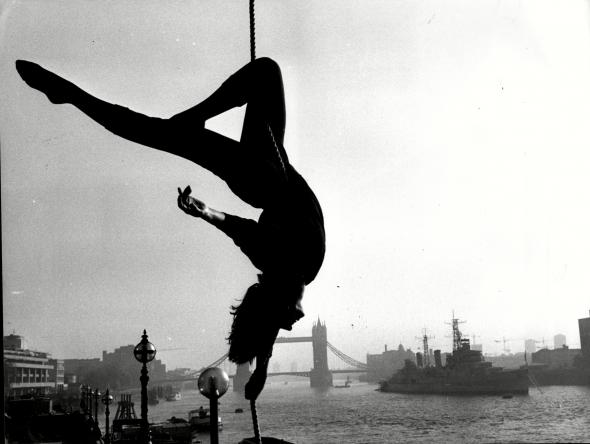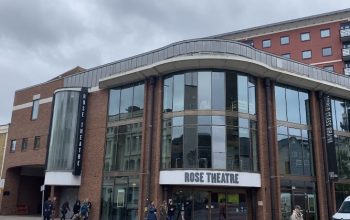 Written by a man, originally performed by men and probably only viewed by men when Euripides wrote it in 431 BC, Medea is the story of a woman who strives to break through society’s confinements.
Written by a man, originally performed by men and probably only viewed by men when Euripides wrote it in 431 BC, Medea is the story of a woman who strives to break through society’s confinements.
Reflecting on the significance of Medea, lead actress Tamsin Shasha said: “Greek tragedies are epic in their nature because they have such universal themes.”
These themes were given a new dimension in Abigail Anderson’s direction of Actors of Dionysus’ new aerial performance of the play which was at the Rose Theatre in Kingston last week.
The lengthy and in depth interpretations of Medea and the eponynomous character’s motives for her choices and actions are also epic. Perhaps this is one of the reasons that Medea is regarded as particularly tricky to direct
There were over 15 people involved in this production from ariel choreographers to riggers and sound designers. The cast included Kino McDonald, Ewan Downie, Belinda Sykes and Shasha as Medea.
The production opened powerfully with Medea centre stage being pulled in conflicting directions, a clear sign of her consciousness.
In her opening speech it was as though she sat in judgement hopelessly trying to gain the understanding of the women of the chorus.
Medea is the story of a frustrated woman, a foreigner, treated with contempt by those around her. Unwilling to let her apparent weaknesses get the better of her she takes control but her revenge ends with desperate consequences.
The set was a large square red block, part solid structure, part ribbon pulled across to allow performers access to and from the stage. Performers poured through it and appeared from under it. The stage was used extensively and left room for light humour one moment, the intensity of a relationship the next and then cruelty.
The singing scattered through the piece added another stunning layer to the performance, with strange a cappella harmonies from Greece, Georgia and Corsica.
What was striking about this production of a classic was the use of aerial ribbons and rope which really lent themselves to the theatrical element of the play. Shasha said: “Using aerial in an integrated, organic way was justifiable, the aerial work supported the narrative. It had to be combined with what you can do [physically].”
In a scene with Medea and her husband, Jason, arguing, they were clipped onto taut ropes manipulating each other’s movements.
Medea flew through the air aggressively, causing Jason to be lifted off his feet and swung around. Jason jumped and Medea was jolted uncomfortably. The phrase of movement ended with Medea hanging pathetically in the air, powerless to move: a symbol of her situation?
In a powerful monologue, a passionate Medea was flung first to one side of the stage, then up to the top of the set and then dropped down. This was a turbulent representation of her anguish over her choices.
This was a very effective and disturbing piece which captured a strong sense of the workings of Medea’s conflicting desires.
Image courtesy of Associated Newspapers/REX




